Why We Use Vinegar or Kombucha in This Recipe
Many historical texts mention the use of both garlic and honey in traditional medicine. Still, none explicitly describe the modern method of combining only these two ingredients and leaving them to ferment. In all my readings on fermentation history, I’ve never come across any historical descriptions of fermented garlic honey, made with only garlic and honey. However, I did come across many accounts of over 1,200 types of oxymel in Ancient Greece and Persia, many of which include garlic.
The ancient Greeks and Persians used oxymels to extract and preserve potent herbs, including garlic. Oxymel is an ancient preparation, and Hippocrates wrote records about its benefits around 400 B.C.E. in On Regimen in Acute Diseases. The thing to note here is that oxymel uses a combination of honey and raw vinegar.
Many readers here already know this, but I learn fermentation and develop my recipes in one of two ways. First, I learn from and create from an understanding of microbiology and microbial physiology. Second, I learn from and create with an understanding of historical, time-tested recipes. And this is why I call for raw vinegar or raw kombucha in this recipe: “garlic honey” was most likely historically an oxymel, and I think it should be made as an oxymel.
When garlic oxymel is made with raw honey and raw vinegar, it essentially ferments into a potent, medicinal garlic vinegar. The microbes in raw vinegar consume the honey, turning it into alcohol. The microbes also simultaneously convert the alcohol and sugars into acids. This makes it a fantastic process for extracting the medicinal compounds of garlic, making them more bioavailable. You can also use raw kombucha in place of raw vinegar, since the microorganisms are very similar and will facilitate the same type of fermentation.
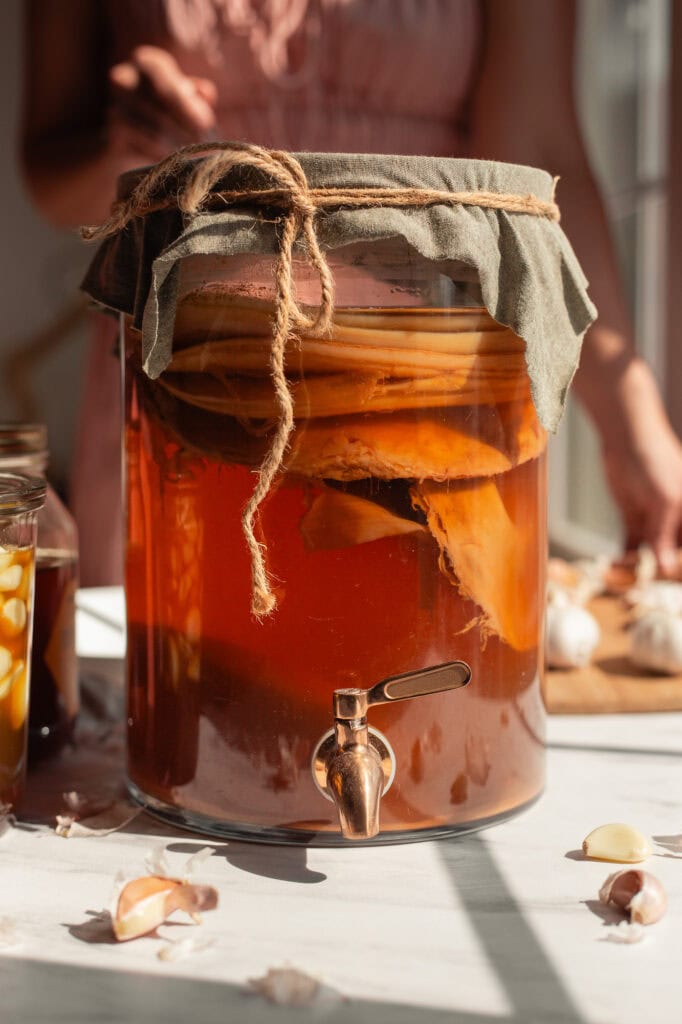
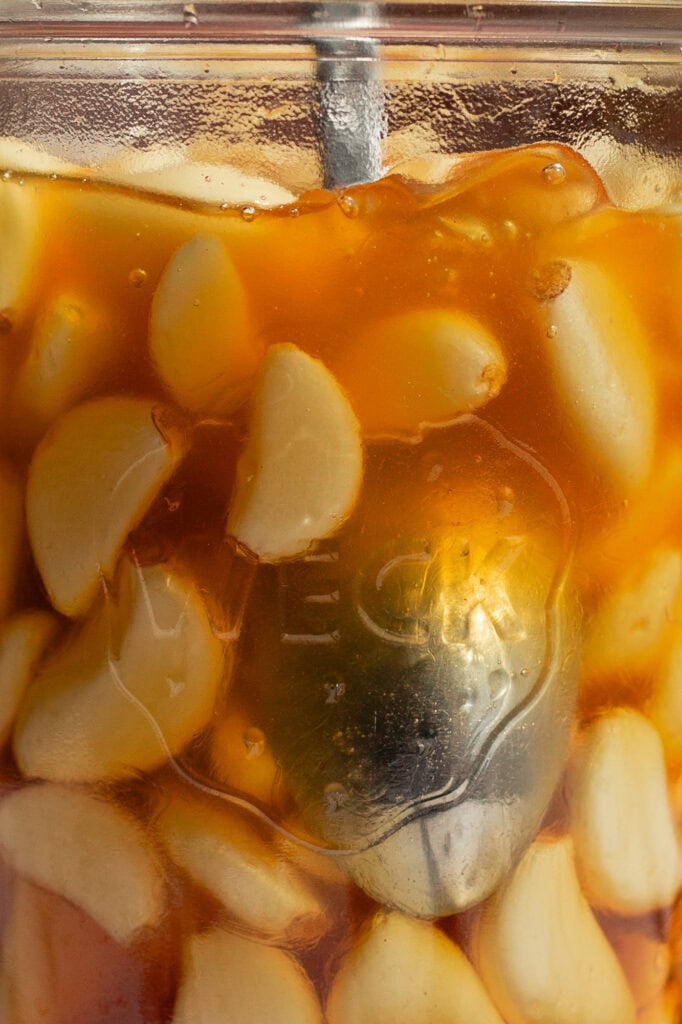
Fermented Garlic in Honey
Out of curiosity, I’ve tested quite a few batches of garlic mixed in plain honey (no vinegar or kombucha added). Honey is naturally acidic, usually starting around pH 3.8. However, each time I’ve run this test, as the honey thins out and the water activity increases, the pH always rises, usually ending up somewhere around 5 to 6. This is absolutely not a safe pH for preservation.
My best educated guess is that this increase in pH is due to non-ideal microbial activity. Acid-producing microbes in honey may be negatively affected by the garlic, possibly leaving us with wild microbes that “eat” acids instead. Wild yeast acid consumption is a recognized phenomenon that can destabilize the pH of foods, including honey. The problem could be a high proportion of microbes that eat acids, rather than microbes that produce acids.
You see, the thing about “garlic honey” is that it’s a fairly new recipe and trend. Simply combining raw garlic and raw honey in a jar is not a time-tested, historical recipe. We need raw vinegar microbes in the mix.
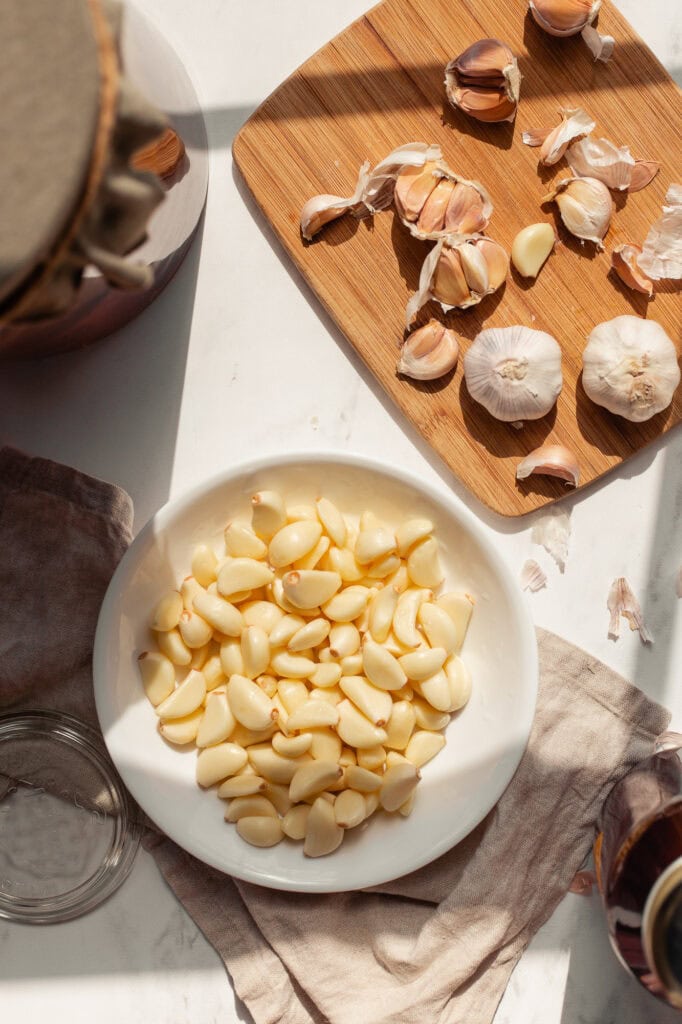

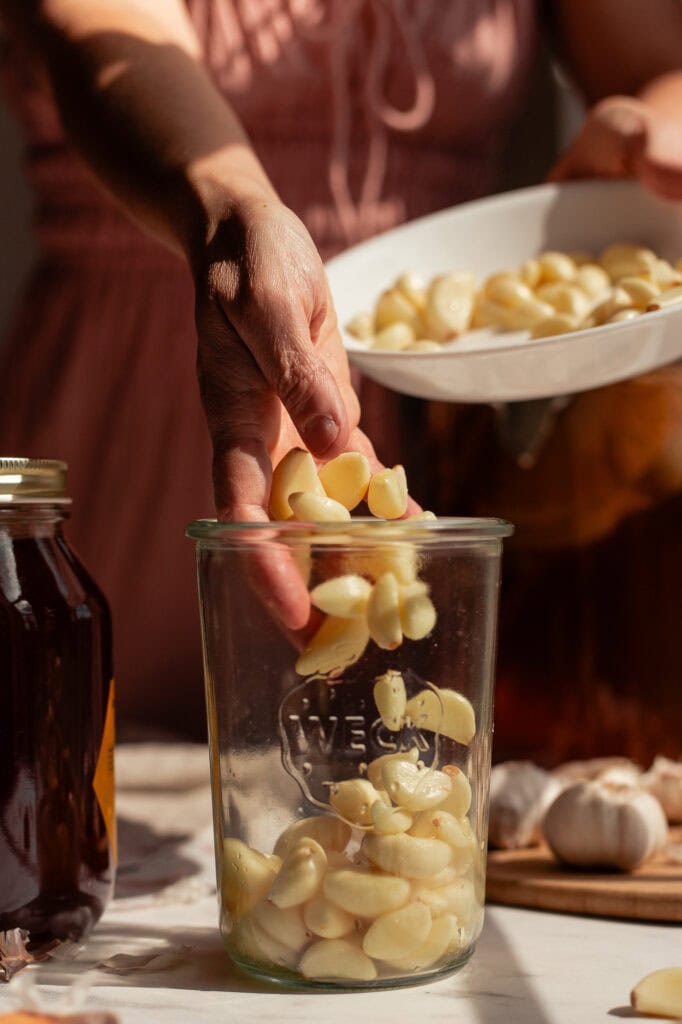
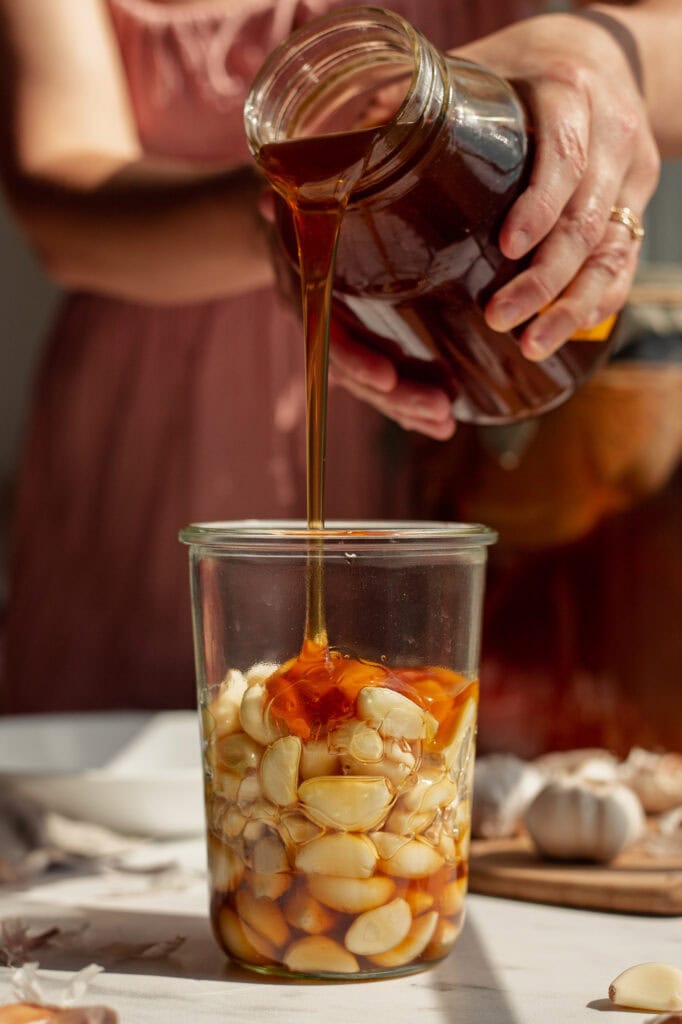
Is Botulism really a concern in fermented garlic honey?
Yes, it’s a valid concern. Honey and garlic can both contain endospores of Clostridium botulinum. Like I wrote above, “garlic honey” is a relatively new recipe and trend. Simply combining raw garlic + raw honey in a jar is not a time-tested, historical recipe. So, I’m not saying that if you’ve made garlic honey without raw vinegar, it is destined to have botulism. I’m just saying that without raw vinegar, it is a concern, and it can happen.
When we make fermented garlic honey as an oxymel, the pH starts at a safe acidity and remains at a safe acidity (below 4.6). This is because the microbes in raw vinegar (or raw kombucha) ensure the honey is metabolized into more acids. These microbes “eat” sugars similarly to the way they do when making kombucha, wild mead, and vinegar. When we add raw vinegar or raw kombucha to a garlic honey oxymel, we are guaranteeing the presence of many acid-producing microbes that keep the mixture acidic and safe.
I also want to mention that the fact that we stir/shake this everyday helps with safety too! Stirring and shaking oxygenates it. Acetic acid bacteria love oxygen, while Clostridium spp. do not love oxygen because they are obligate anaerobes.
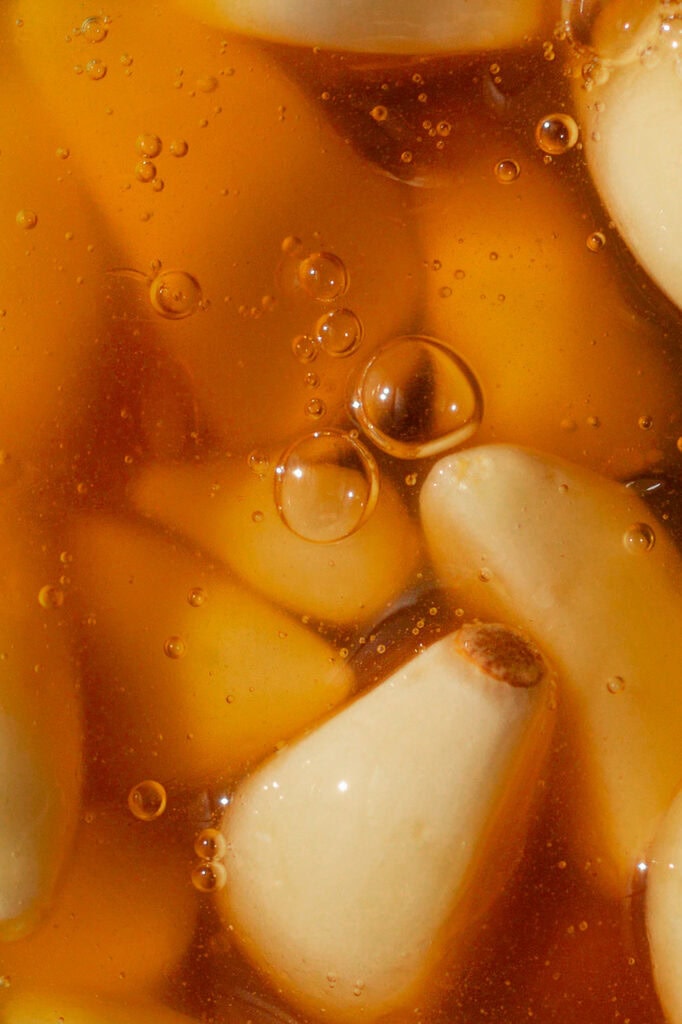
How to Use Fermented Garlic Honey
After infusing for 30 days, you should store the oxymel in the fridge. Fermented garlic honey oxymel is a potent immune tonic, and is most often used to help with cold, flu, and sinus symptoms. You can eat the garlic cloves, take a spoonful of the liquid oxymel, or add some to a medicinal tea. The tea brewing instructions are in the recipe card below.

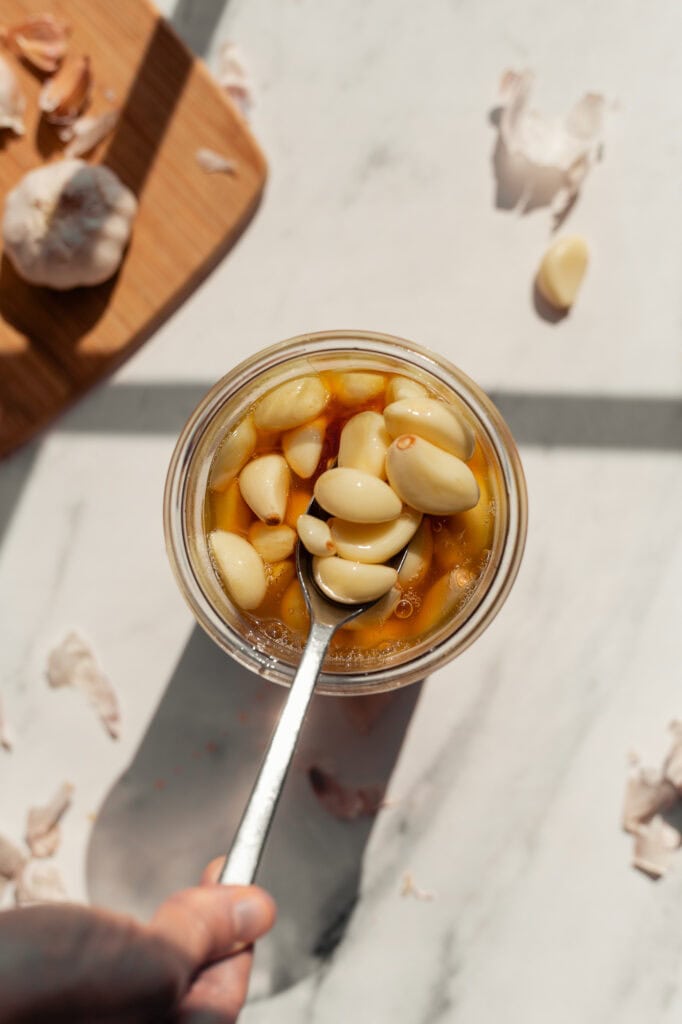
How Long Does Fermented Garlic Honey Last?
I suggest keeping it refrigerated once it’s finished infusing at room temperature. It will definitely last well over a year in the refrigerator.
What Honey Should I use?
Use local raw honey from a local farm or farmers market for the best results and immune benefits! Some people have a theory that honey contains local pollen, which can desensitize your immune system to local allergens. This isn’t very scientific, or factual or whatever, but I figure why not give local raw honey a go. Maybe it does help with allergies maybe it doesn’t but you don’t have anything to lose by shopping local.
Can I use pre-peeled Garlic in this recipe?
While freshly peeled works best, you can absolutely use pre-peeled! Rinse it well first.
I’m vegan, can I substitute the honey?
Yes! Agave nectar is the best substitute, since it is close in FODMAP composition to honey.
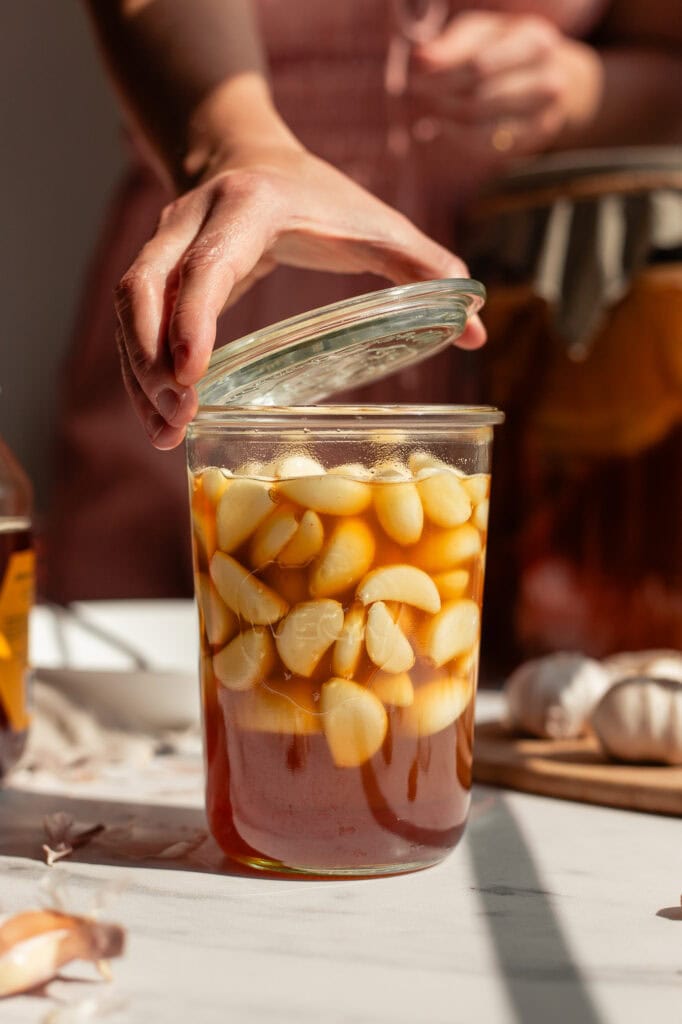
Fermented Garlic Honey Oxymel (Recipe Safe from Botulism!)
My fermented garlic honey recipe is made as an oxymel, with raw vinegar or kombucha as a starter culture, which keeps it safe from botulism. This potent garlic tonic is great for immune health and can aid in easing cold and flu symptoms.
- Prep: 10 minutes
- Total Time: 720 hours 10 minutes
Ingredients
- about 2 cups garlic cloves, peeled
- raw honey
- Raw Vinegar (or fully fermented raw kombucha)*
Instructions
- The amounts here are customizable and depend on how much you’d like to make! You need enough garlic to fill the jar halfway. You need enough raw honey to almost cover the garlic, and enough raw vinegar to fill the jar the rest of the way.
- Peel the garlic and fill your jar half way with garlic cloves.
- Slowly pour the raw honey over the garlic until its just about covered with raw honey and top off the jar the rest of the way with raw vinegar.
- Wipe the jar rim, cap the jar with a rust-proof solid lid, and shake until the honey is fully dissolved in the vinegar (or you can stir with a spoon until it’s all dissolved, then put the lid on).
- Put the oxymel in a cool place (like a cabinet away from heat sources) out of direct sunlight to infuse for about 30 days.
- It’s okay if you skip a day, but its best to open it up and stir it, once a day. You should see many bubbles in the jar.
- After infusing it for 30 days, place it in the fridge. Check the pH with a pH strip if you have any concerns about safety.
- To use your fermented honey garlic oxymel: This oxymel is most often used to help with cold, flu and sinus symptoms. You can make a medicinal tea, eat a garlic clove, or take a spoonful of the oxymel. To make a tea, combine two tablespoons of oxymel, two tablespoons of lemon juice, one teaspoon of raw honey, and 12 ounces of filtered water.
Notes
- Vinegar must be raw, with the mother (raw vinegar is not distilled and contains live active microbes). Fully fermented raw Kombucha or kombucha vinegar are fantastic substitutes.
- For other herbal oxymel recipes click here
- Stirring or shaking the jar daily oxygenates it, which also helps keep it safe from Clostridium spp.
- Garlic honey oxymel should not be given to babies
- Garlic can sometimes turn blue, this is a normal reaction between beneficial garlic compounds and acid.
- Garlic honey oxymel is not intended to cure or treat any disease.


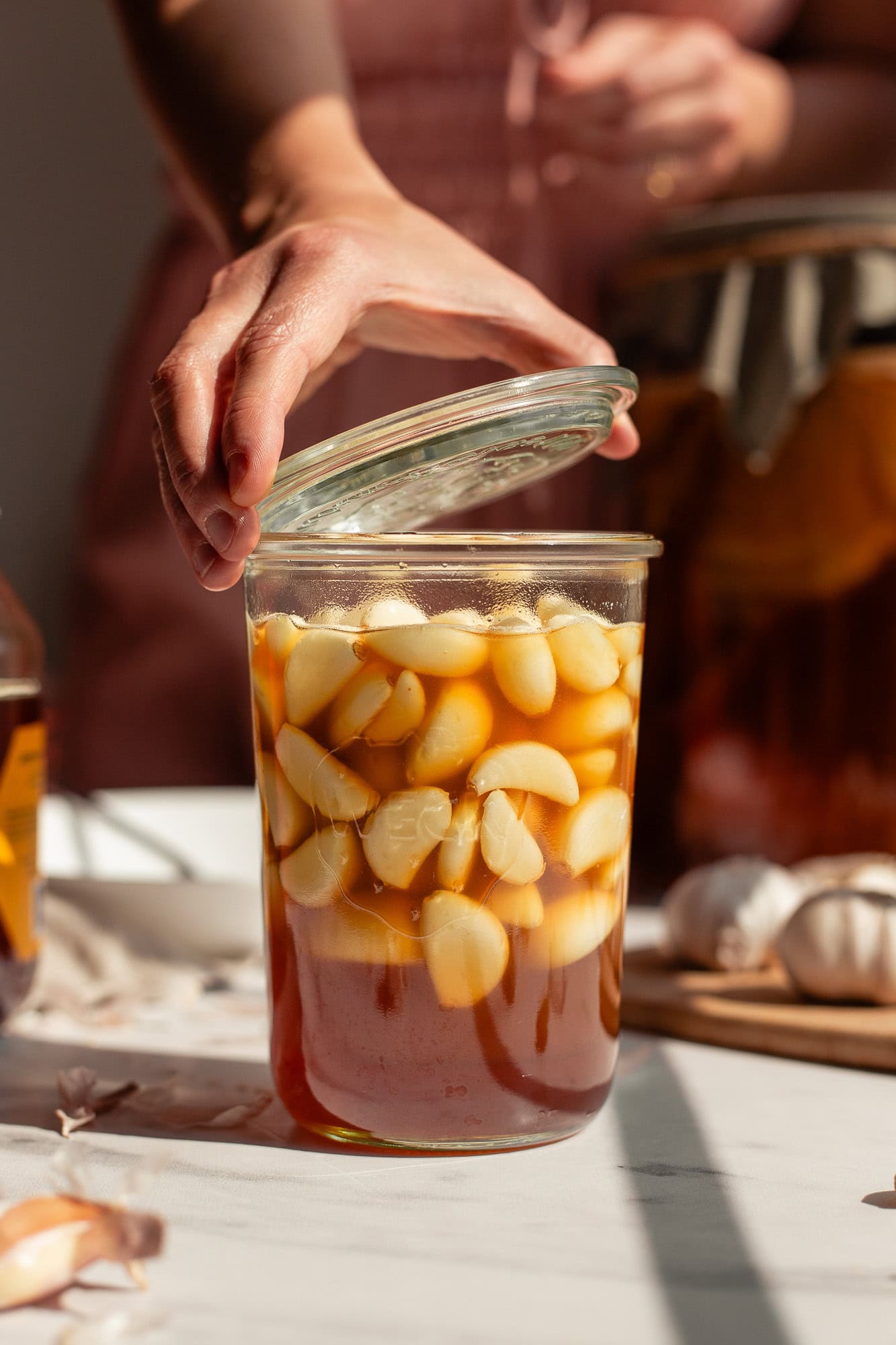












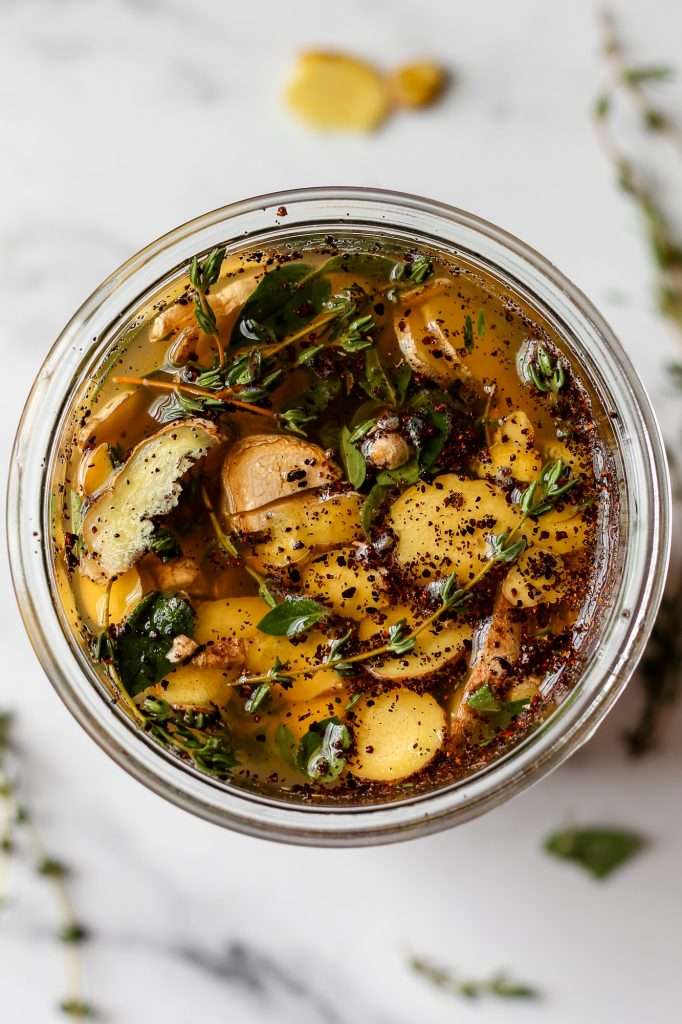
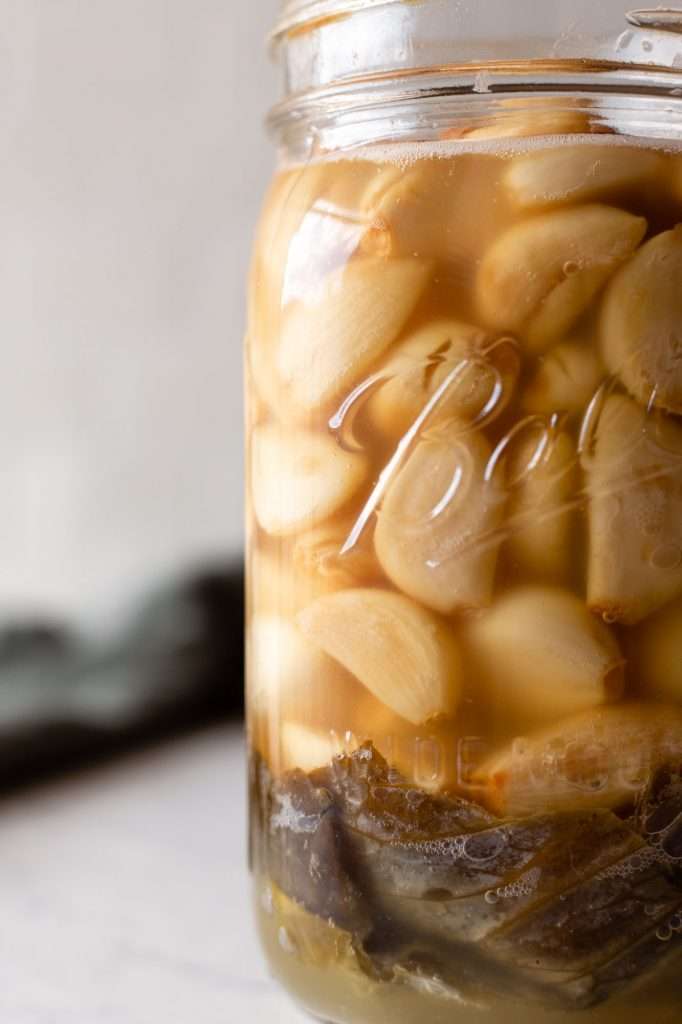


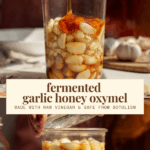
Hello, Kaitlynn,
This looks interesting. I have a bunch of honey from a local beekeeper, but some of it has crystallized. If I microwave it, or put into a hot water bath, is it still “raw”, for use in this recipe?
Thanks,
Joe
I think if you stick the jar in a warm water bath, then it should liquefy again and you can use it.
Thank you. I’ll try it, and report back.
Joe
Can I add ACV after it’s been fermenting for about a week?
I honestly don’t know for sure because that’s not how I tested the recipe.
Hi Kaitlynn!
I’ve tried your recipe. I used raw apple cider vinegar with the raw honey. My organic garlic cloves are starting to sprout. Has this happened to you before?
I’ve never seen them sprout in this mixture before! We’re the cloves showing signs of sprouting before you used them in this recipe?
Hello! Thank you for this recipe that is botulism safe, I have been looking for one! I have a couple of questions please:
1) Do I need to open/“burp” the jar in these 30 days?
2) Can I add other ingredients such as ginger or red onion or both?
3) I have some glass mason jars with plastic lids (Aozita from Amazon). Could I use these lids to ferment the honey garlic mixture (is it safe)? Or do I need a different lid material?
Thank you!
yes! It’s best to open up the jar regularly to give it a stir.
You can totally add in some ginger and onion.
I love using mason jar with plastic rust proof lids. That should work great!
Hi, I would like to buy your e-book of recipes. Fermented foods and beverages, both food and drink
Hey there! I only have downloadable ebooks for my online course students. The ebooks accompany the course lessons. If you’re interested in that you can learn more about the course here https://fermentation.school/
Can’t wait to try these recipes!